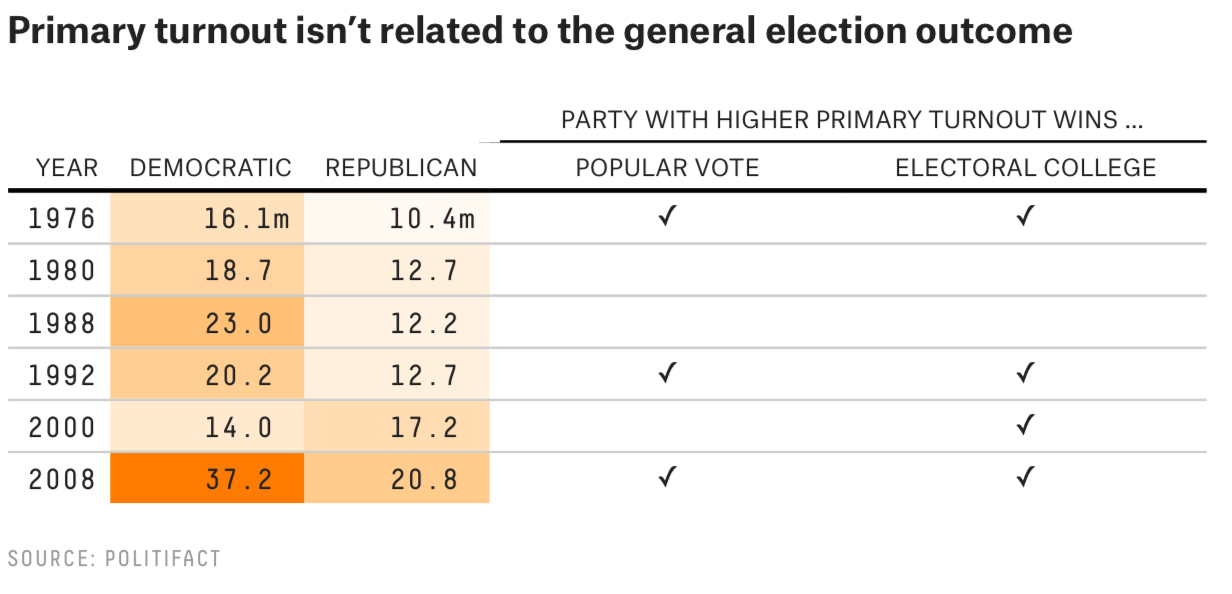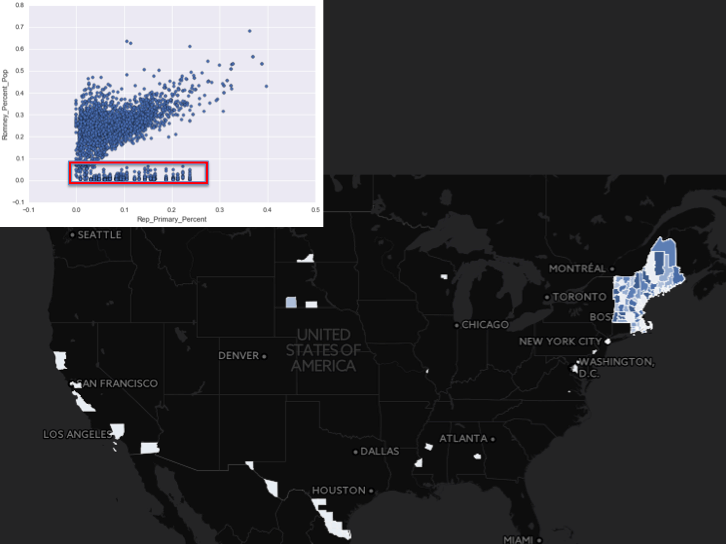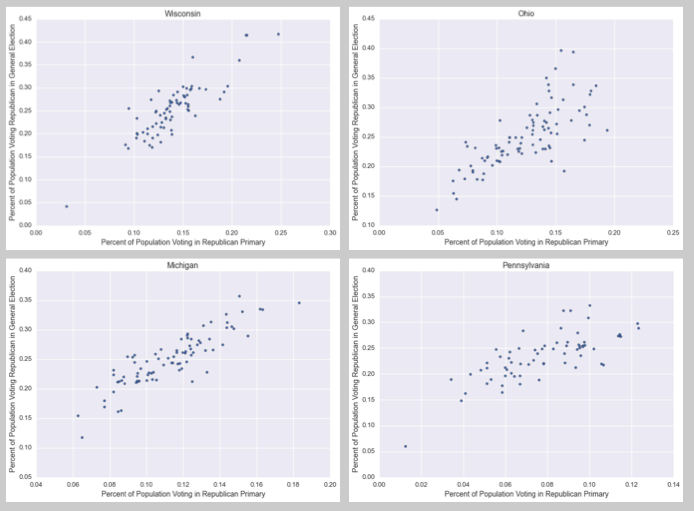Primaries and the General Election
Quite a few of us are worried about the upcoming election. Certainly this year has been unique with candidates such as Sanders and Trump encroaching on the two party dominated system. With all of that, everyone’s question is who will win in November? Could there really be a Trump presidency? Some like Michael Moore in his article “5 Reasons Trump Will Win” insist that we are doomed and site evidence such as the booming Republican primary turnout as an indication that there may be a similar upset come November. Others such as David Brooks, Politifact and Five Thirty Eight claim that there is simply no relationship between the primaries and the general election. Certainly this is no light matter, and as Brexit demonstrated, we cannot assume an outcome to be impossible. Yet the question remains, is there a relationship between primary turnout and the subsequent general election?
Let’s take a look at some of the previous analysis and claims by Politifact and Five Thirty Eight. Their initial analysis was checking David Brook’s claim that the surge in Republican primary turnout was not indicative of a Trump win come November. Yet the analysis used to justify these claims is overly simplistic. In fact, the meager analysis simply looks at previous elections where both parties held primaries and merely looks at the total number of voters from either party and whether this determined the winner of the general election. Here’s their summary:

Isn’t this a bit absurd? Would we really expect the overall primary turnout to match who wins the general election? Both Five Thirty Eight and Politifact make some good points that primary turnout may be indicative of a competitive primary, with higher voter turnout early on while the nomination is still up for grabs, and diminishing participation as one candidate takes the lead and seals their victory. This rational is at least plausible, yet neither this nor any other potential nuances are factored into their analysis. The general election is often all about swing states. When’s the last time Texas went blue or Massachusetts red? Wouldn’t we be better served to look at the correlation between primaries and the general election on a more granular level? As an initial exploration let’s take a look at the percentage of people from each county who voted in the 2012 Republican Primary compared with the percentage of people from that same county who voted for Mitt Romney in the general election:

Clearly pretty noisy, but there’s certainly some patterns to the data. One area that particularly stood out was along the x-axis towards the bottom of this graph.

Interesting! From first appearances it would seem that in New England (and a few scattered other counties) where the population is typically liberal, Republicans show up more frequently for the primaries than they do for the general election. Let’s take a look at a few swing states and their counties turnouts in 2012.

Again, there seem to be some fairly consistent correlations within geographic regions. Certainly this is far from saying that Trump will be the next president but there certainly seems to be some relationship worthy of much more investigation than the rudimentary analysis put forth by Politifact and Five Thirty Eight.